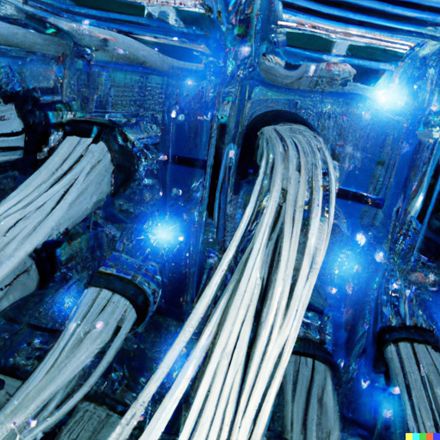News
Delving into the World of Data Cabling: 10 Fascinating Facts
Data cabling, the unsung hero of our digital age, silently orchestrates the seamless flow of information that powers our modern world. Often hidden behind walls and beneath floors, these unassuming wires play a pivotal role in shaping our connected lives. Let's explore 10 fascinating facts about data cabling:
1. Fibre Optic Cables: The Data Highway of the Digital World
Fibre optic cables, the fastest and most reliable type of data cable, transmit data using pulses of light through hair-thin strands of glass or plastic fibres. These cables can carry an immense amount of data over long distances without signal degradation, making them the backbone of the internet and telecommunications networks.
2. Data Cables in the Elevator Ride of Your Life
Some high-rise buildings utilize specialized data cables for elevator systems. These cables enable communication between different elevators and building control systems, ensuring smooth operation and safety for passengers.
3. Cat5 vs. Cat6: A Tale of Two Cable Generations
The terms "Cat5" and "Cat6" refer to categories of Ethernet cables. The "Cat" stands for Category, and higher numbers generally indicate better performance and higher data transfer rates. Cat6 cables, for instance, can support faster data transmission speeds compared to their Cat5 predecessors.
4. Unbundling the Secrets of Cable Bundles
When organizing cables into bundles, the size and tightness of the bundle can affect performance. Proper bundling and spacing are crucial to avoid interference, ensuring that data signals travel unimpeded through the network.
5. Ethernet: The Network Brainchild
Ethernet, a widely used technology in data cabling, was developed by Bob Metcalfe in 1973. The first Ethernet network was established at Xerox PARC, and this innovation has since revolutionized the way we connect devices and share information.
6. Cable Certifiers: The Gatekeepers of Network Quality
Technicians use cable certifiers to test and verify the performance of data cables. These devices ensure that cables meet industry standards for data transmission, preventing network disruptions and ensuring reliable performance.
7. Cable Standards: A Global Language for Connectivity
In Europe, the ISO/IEC 11801 standard is commonly followed. These standards ensure compatibility and interoperability between cabling systems across continents, facilitating seamless global connectivity.
8. Cable Recycling: A Sustainable Approach to Data Networks
Recycling old cables is an environmentally responsible practice. Copper cables, in particular, can be recycled and repurposed, reducing electronic waste and conserving resources.
9. Power over Ethernet (PoE): Powering Devices with a Single Cable
Power over Ethernet (PoE) technology allows both data and electrical power to be transmitted over a single Ethernet cable. This technology is commonly used to power devices like security cameras, wireless access points, and IP phones, simplifying installation and reducing power consumption.
10. Structured Cabling in Space: Connecting Across the Cosmos
Even spacecraft and satellites rely on structured cabling for communication systems. The durability and reliability of structured cabling make it suitable for space applications, ensuring seamless communication and control in the harsh environment of space.
These facts highlight the diverse and fascinating aspects of data cabling, showcasing its importance in various industries and applications. From the speed of light to the heights of skyscrapers, data cabling silently shapes our connected world, enabling the seamless flow of information that powers our daily lives.






